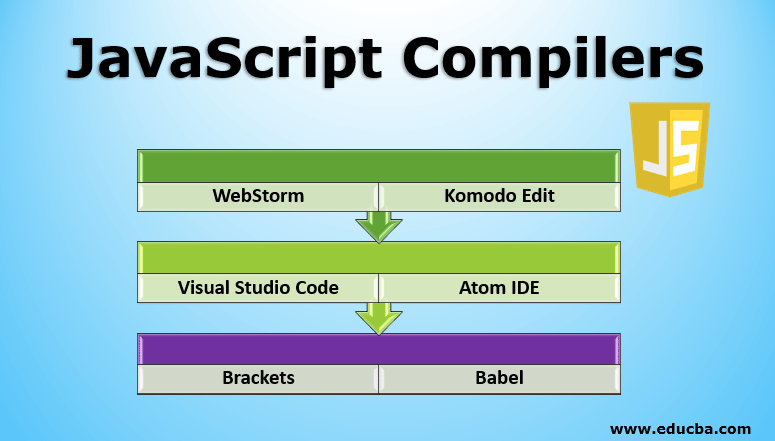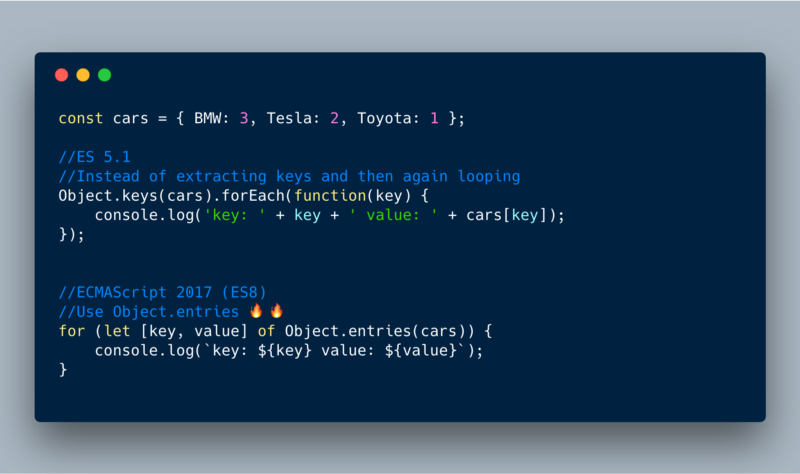In the fast-paced world of web development, the JavaScript language is constantly evolving. New features, syntax improvements, and powerful APIs are standardized in ECMAScript every year. However, browser and runtime support often lags behind, creating a gap between the modern code developers want to write and the code that can reliably run everywhere. This is where Babel, the indispensable JavaScript compiler, steps in. It acts as a bridge, allowing developers to write cutting-edge JavaScript today and have it seamlessly transformed into a backward-compatible version that works in any environment they target.
Babel is more than just a simple transpiler; it’s a foundational tool in the modern web development toolchain. It’s the silent engine powering countless projects, from small open-source libraries to massive enterprise applications. Whether you’re keeping up with the latest React News, building with Vue.js, or architecting a backend with Node.js, chances are Babel is playing a critical role. This article provides a comprehensive deep dive into Babel, exploring its core concepts, practical implementation, advanced techniques, and best practices for optimization in 2024 and beyond.
Understanding Babel’s Core Concepts: Plugins, Presets, and Polyfills
At its heart, Babel is a tool that transforms code. It parses your source code into an Abstract Syntax Tree (AST), manipulates this tree based on a set of rules, and then generates the final, transformed code from the modified AST. This entire process is driven by a powerful and extensible plugin-based architecture.
Plugins: The Building Blocks of Transformation
Every single syntax transformation in Babel is a discrete plugin. If you want to transform arrow functions (`=>`) into traditional `function` expressions, you use the @babel/plugin-transform-arrow-functions plugin. If you need to handle the optional chaining operator (`?.`), you use @babel/plugin-proposal-optional-chaining. This granular approach makes Babel incredibly flexible but can also lead to cumbersome configurations if you have to manage dozens of individual plugins.
For example, to transpile only arrow functions and the spread operator, your configuration might look like this:
{
"plugins": [
"@babel/plugin-transform-arrow-functions",
"@babel/plugin-transform-spread"
]
}Presets: Sensible Collections of Plugins
Managing individual plugins is tedious. This is where presets come in. A preset is simply a pre-configured array of Babel plugins. Instead of listing every syntax feature you want to support, you can use a preset that bundles them together. The most important and widely used preset is @babel/preset-env.
@babel/preset-env is a “smart” preset that automatically determines the plugins and polyfills your project needs based on the environments you specify. This prevents you from shipping unnecessary code and keeps your bundles smaller. You can define your targets using a browserslist query, such as “last 2 versions” or “> 0.5%”.
{
"presets": [
[
"@babel/preset-env",
{
"targets": {
"edge": "17",
"firefox": "60",
"chrome": "67",
"safari": "11.1"
}
}
]
]
}Polyfills: Adding Missing Features
Transpilation only handles syntax. It can turn an arrow function into a regular function, but it can’t create a feature that doesn’t exist, like Promise or Array.prototype.includes in older browsers. This is the job of a polyfill. A polyfill is a piece of code that provides a modern API in older environments that lack it.
@babel/preset-env can intelligently inject polyfills from the core-js library. By setting the useBuiltIns option to "usage", Babel will scan your code and only include the specific polyfills for features you are actually using, leading to significant bundle size savings.
Practical Implementation: Integrating Babel into Your Workflow

Understanding the concepts is one thing; integrating Babel into a real-world project is another. The process typically involves installing the necessary packages, creating a configuration file, and hooking it into your build process, which might be managed by tools like Webpack or Vite.
Initial Setup and Configuration
First, you’ll need to install the core Babel packages into your project as development dependencies:
npm install --save-dev @babel/core @babel/cli @babel/preset-envNext, create a configuration file at the root of your project. The recommended modern approach is babel.config.json, as it provides project-wide configuration.
A robust starting configuration might look like this. It uses @babel/preset-env to target modern browsers, intelligently injects polyfills from core-js@3 based on usage, and includes presets for React and TypeScript, which are common in many modern stacks. Keeping up with TypeScript News is essential, and Babel’s support makes integration seamless.
{
"presets": [
[
"@babel/preset-env",
{
"useBuiltIns": "usage",
"corejs": "3.33", // Specify your core-js version
"targets": "> 0.2%, not dead, not op_mini all"
}
],
"@babel/preset-react",
"@babel/preset-typescript"
],
"plugins": [
// Add any specific plugins you need here
"@babel/plugin-proposal-class-properties"
]
}Integration with Build Tools
Babel rarely runs in isolation. It’s almost always part of a larger build pipeline, orchestrated by tools that bundle your modules, optimize assets, and prepare your code for production.
Webpack
For years, Webpack has been the de facto standard for bundling JavaScript applications. Integrating Babel is done via babel-loader. This loader tells Webpack to run all .js, .jsx, .ts, and .tsx files through the Babel compiler.
Here’s a typical rule configuration within a webpack.config.js file:
// webpack.config.js
module.exports = {
// ... other webpack config
module: {
rules: [
{
test: /\.(js|jsx|ts|tsx)$/,
exclude: /node_modules/,
use: {
loader: 'babel-loader',
options: {
cacheDirectory: true, // Improves build performance
},
},
},
],
},
// ... other webpack config
};This setup is fundamental for developers following Vue.js News or Angular News, as their respective CLIs often configure this under the hood.
Vite and the Modern Tooling Landscape
The latest Vite News often focuses on its incredible speed, which comes from using esbuild, a Go-based bundler, during development. However, for production builds, Vite often relies on Rollup and can use Babel for broader compatibility and access to its vast plugin ecosystem. Framework-specific plugins like @vitejs/plugin-react automatically integrate Babel, giving you the best of both worlds: speed in development and robustness in production. This shift highlights a broader trend where even as faster tools like SWC News and esbuild gain traction, Babel remains a vital part of the ecosystem due to its maturity and extensibility. This is especially true for projects that rely on complex transformations not yet supported by the newer, faster tools.
Advanced Techniques: Unleashing Babel’s Full Potential

Beyond basic transpilation, Babel offers powerful features for code transformation, optimization, and integration with modern language extensions like TypeScript.
Writing Custom Plugins
The true power of Babel lies in its extensibility. You can write your own plugins to perform any code transformation imaginable. This is an advanced topic that requires understanding Babel’s AST traversal system, but it can be used for tasks like codemods (programmatically refactoring code), implementing custom DSLs, or performing compile-time optimizations.
A Babel plugin is a simple JavaScript object that returns a `visitor` object. The visitor defines methods for specific AST node types. When Babel traverses the tree, it calls your method whenever it encounters a matching node.
Here is a trivial example of a plugin that replaces all instances of the variable `foo` with `bar`:
// my-custom-plugin.js
module.exports = function() {
return {
visitor: {
Identifier(path) {
if (path.node.name === 'foo') {
path.node.name = 'bar';
}
}
}
};
};This level of control is why Babel is used for much more than just ES2015 transpilation. It powers tools like `styled-components`, Jest’s code transformation, and many framework-specific optimizations in the ecosystems of Next.js News, Nuxt.js News, and Remix News.
Babel and TypeScript
Using Babel to “transpile” TypeScript is a popular and effective strategy. The @babel/preset-typescript preset enables Babel to parse TypeScript syntax and then simply strip the type annotations away, leaving standard JavaScript. The key thing to understand is that Babel does not perform type checking. It only removes the types. You must still run the TypeScript compiler (`tsc –noEmit`) separately to get the benefits of static type analysis. This decoupled approach can lead to faster build times, as Babel’s transformation is often quicker than `tsc`’s combined type-checking and emitting process.

Best Practices and Performance Optimization
A misconfigured Babel setup can lead to bloated bundles and slow build times. Following best practices is crucial for maintaining a healthy and performant project.
Fine-Tuning @babel/preset-env
- Use a
browserslistsource: Instead of hardcoding targets in your Babel config, use a.browserslistrcfile or a"browserslist"key in yourpackage.json. This creates a single source of truth for browser support across all your tools (Babel, PostCSS, ESLint). - Prefer
useBuiltIns: "usage": This setting is the most efficient way to handle polyfills, as it ensures you only include the code your application actually needs. - Specify a
corejsversion: Always explicitly set thecorejsversion to ensure your builds are stable and reproducible. Forgetting this can lead to subtle bugs when dependencies are updated.
Improving Build Speed
- Enable Caching: When using
babel-loaderwith Webpack, setoptions: { cacheDirectory: true }. This will cache the results of Babel’s transformations to the file system, dramatically speeding up subsequent builds. - Exclude
node_modules: Always ensure your Babel loader configuration excludes thenode_modulesdirectory. Packages published to npm should already be transpiled, and running Babel over your entire dependency tree will cripple your build times. - Consider Newer Tools: For server-side development, keeping up with Node.js News, Deno News, and Bun News is important. These modern runtimes have excellent support for recent JavaScript features, potentially reducing the need for extensive transpilation. Similarly, build tools like Turbopack News are pushing the boundaries of performance, often by using Rust-based compilers like SWC.
Common Pitfalls to Avoid
- Global Polyfill Pollution: Be careful when using polyfills that modify global objects. While necessary for applications, libraries should generally avoid this to prevent conflicts when used in other projects. Use
@babel/plugin-transform-runtimeto inject helpers without polluting the global scope. - Plugin and Preset Order: The order of plugins and presets matters. Babel applies plugins before presets, and both are applied in the order they are listed. A common mistake is putting a plugin that needs to run first at the end of the list.
Conclusion: Babel’s Enduring Relevance
In an ecosystem that is constantly chasing speed and novelty, Babel stands as a testament to the power of flexibility, maturity, and community. While faster transpilers like SWC and esbuild have carved out significant roles, particularly in tools like Jest and Next.js, Babel’s unparalleled plugin ecosystem and deep integration across the entire JavaScript landscape ensure its continued importance. It remains the ultimate tool for custom transformations and for guaranteeing that the modern JavaScript you write today will work flawlessly for your users tomorrow.
As you continue to build with frameworks from Svelte News to SolidJS News, or explore testing with tools from Cypress News to Playwright News, understanding Babel is not just a lesson in web history—it’s a practical skill that empowers you to write better, more modern code. By mastering its configuration and embracing its powerful plugin architecture, you can ensure your projects are both future-proof and backward-compatible, a cornerstone of professional web development.

